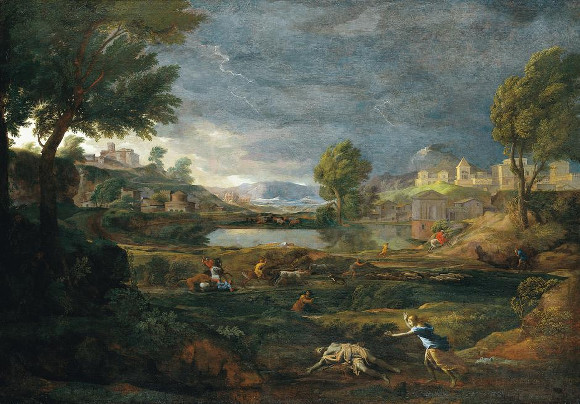Back last night for a second look at Pyramus and Thisbe at the COC. I’ve been involved in a huge amount of discussion, mostly with Katja, about this show since we saw it on Tuesday and there were many things about the Monk Feldman piece and its staging that I wanted to think about again. Lots of thoughts and, perhaps, a slightly different perspective since I was watching from two levels higher in the house this time.
 But first, a few words about the performances. The singing in the Monteverdi is even better than I remembered. This music is so spare with its four instrument continuo that the greater part of conveying emotion falls on the singer. Both Krisztina Szabó and Owen McCausland showed a certain fearlessness in their willingness to make ugly sounds where necessary, though sounding very beautiful where the tone warranted it. I was also more aware of just how demanding Christopher Alden’s staging is physically on the soloists. The fight scene in Il combattimento is very well done and involves some moves that must have required enormous trust between Szabó and Addis. Pyramus involves lots of very, very slow choreographed movement which is much harder than faster stuff. And, of course, they have to sing too. I don’t think I fully realised just how much the chorus have to do and how well they do it either.
But first, a few words about the performances. The singing in the Monteverdi is even better than I remembered. This music is so spare with its four instrument continuo that the greater part of conveying emotion falls on the singer. Both Krisztina Szabó and Owen McCausland showed a certain fearlessness in their willingness to make ugly sounds where necessary, though sounding very beautiful where the tone warranted it. I was also more aware of just how demanding Christopher Alden’s staging is physically on the soloists. The fight scene in Il combattimento is very well done and involves some moves that must have required enormous trust between Szabó and Addis. Pyramus involves lots of very, very slow choreographed movement which is much harder than faster stuff. And, of course, they have to sing too. I don’t think I fully realised just how much the chorus have to do and how well they do it either.
 And so to Pyramus and Thisbe. We are told it’s inspired by Poussin’s painting
And so to Pyramus and Thisbe. We are told it’s inspired by Poussin’s painting
Landscape During a Thunderstorm with Pyramus and Thisbe. Looking at this painting one is struck by how Pyramus and Thisbe seem almost dwarfed by the rest of the canvas. The lioness, too, is noticeable only on fairly close study. If we probe deeper we can read Monk Feldman’s 1997 essay Music and the Picture Plane: Poussin’s Pyramus and Thisbe and Morton Feldman’s For Philip Guston which contains the phrase “As the eye comes to linger on the lioness, we are made to feel the psychological turmoil of Thisbe, who wants to reverse time.” All this is strongly reflected in the “narrative” of Monk Feldman’s libretto. We start with Pyramus not committing suicide. We continue with Thisbe’s confrontation with the lioness being non fatal. The vector of “Thisbe time” seems to have reversed sign. The music, with it’s highly indeterminate temporal structure, further undermines any idea of conventional linearity. When the lovers step of the set into the empty spaces of the stage Time and Space seem to have been abandoned utterly. Their movements mirror each other until, in the last seconds of the piece, they touch, just. Transcendence and Union are achieved through means more abstract than ashes buried in a common urn. In other words Ovid, and even Poussin, seem just a jumping off point for something much deeper. This is where I wish I had a copy of the libretto rather than my imperfect recollections of it. In particular, I would love to go a level deeper on the Rilke texts used in the final scene.
I still feel I’m only scraping the surface here and I’m somewhat in awe of the ability of Christopher Alden to shape this into a coherent stage piece and of his performers who realise it so well.
Photo credit: Gary Beechey

Thank you for your lucid critique. I am going to see it again and your words will help make it all more understandable.
Few things have got under my skin like this. I may be overthinking it!